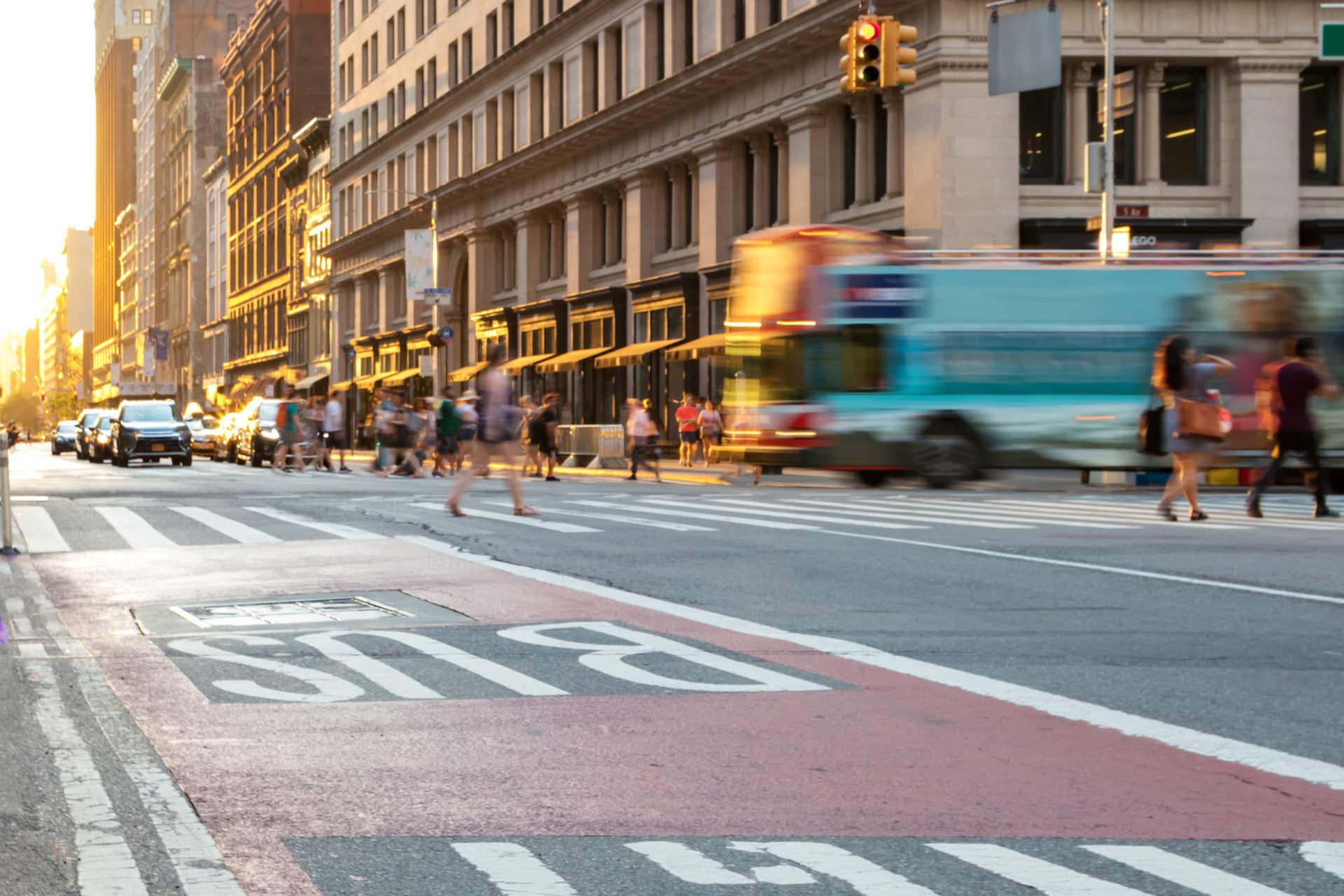Free Consultation
Free Consultation

Buses are ubiquitous in New York, and many New Yorkers rely on them to get around. However, they’re big, they’re heavy, and they’re making their way through some of the most crowded streets in the country.
So, yes they are prone to accidents.
Moreover, the accidents are frequently more serious than an auto accident due to the size and weight of buses. For example, more than a dozen people were recently injured in a bus crash at Newark airport when a bus plowed into a concrete divider while approaching a terminal.
These types of crashes are all too common. In fact, MTA buses were involved in over 21,000 crashes in the past three years. At least 2,520 people, or 2.7 people per day, were injured in the last three years. Some the injuries were severe or even fatal.
The cause all of these crashes? There isn’t just one.
Many different factors can lead to a bus accident, and below, we take a look at some of the common causes of bus crashes, and who might be liable in each situation.
Motor coach companies are required by state and federal law to maintain a safe and operational fleet with well-trained and well-rested drivers.
Buses also require a lot of maintenance and upkeep to remain safely operational. Training drivers is a major cost, and so is maintaining a sufficient number of drivers to avoid overwork.
In order to maximize profits, bus companies often cut corners on state and federal regulations. Often, the inspections are inadequate, meaning that the first sign of a violation may be a dangerous crash that injures passengers. Even the MTA has fallen down on training its operators.
Under these circumstances, it’s likely the bus company would be found liable. That is unless the bus itself has a defective part. Even then, the bus company might be at least partially responsible, but the manufacturer could also be held accountable for its part.
Bus drivers take the safety of hundreds of passengers into their hands daily. There are therefore many laws in place to regulate bus drivers. Unfortunately, many of these laws are largely ignored.
For instance, bus drivers may only legally be on the road before taking a break or ending the shift for a certain number of hours under “hours of service” laws. Other laws regulate maximum bus speed, as well as protocols for turning and passing. Drivers are also prohibited from talking to passengers or using a cell phone.
When drivers disregard these laws, the resulting consequences are often serious. It is important to note, though, that a bus driver’s negligence is often still the ultimate responsibility of the bus company, which will be held liable in most cases.
New York is notorious for harsh winters, with inclement weather usually beginning as early as September and lasting through March – sometimes it sticks around as late as May.
The resulting poor road conditions are a common cause of roadway crashes in New York, including bus crashes.
Still, bus drivers should be trained to operate the vehicle in inclement weather conditions, which is mandated by law. If the appropriate precautions weren’t taken, the bus company will be held liable for the crash.
New York is known to be chaotic (to say the least!) Navigating a large and ungainly bus through the chaos of erratic drivers, cyclists, and pedestrians is far from easy, and sometimes crashes can result.
The liable party in these cases depends on the specifics of the accident, and which vehicle(s) are determined to be at-fault.
If the bus driver is at fault, the bus company will most likely be held liable for any injuries. If another driver is at fault, that driver will be held liable.
Finally, left-turn bus accidents are extremely common. When a bus is turning, there are temporary blind spots where the bus driver’s view is obstructed.
Bus drivers are actually trained exactly how far and when to lean forward and backward to eliminate these blind spots. Failure to do this commonly results in bus crashes.
The bus company is accountable for hiring drivers physically able to lean forward and backward, and for training drivers to do this. Therefore, the bus company could be held liable for improper driver selection or insufficient driver training in the case of a left turn accident.
In sum, bus crashes can be caused by many different factors, but the responsible party should always be held liable for injuries to passengers, pedestrians, and other drivers on the road.